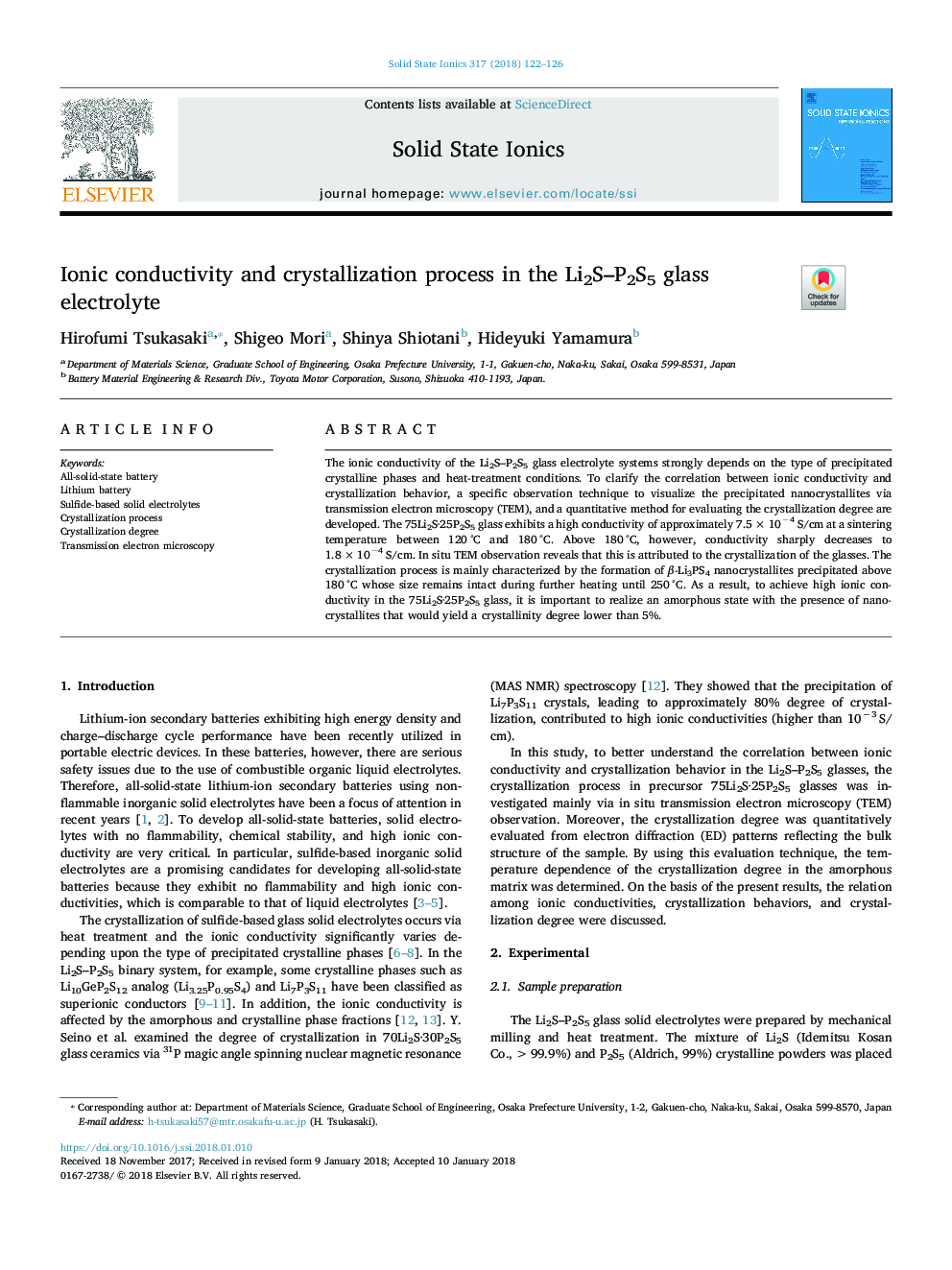| Article ID | Journal | Published Year | Pages | File Type |
|---|---|---|---|---|
| 7744567 | Solid State Ionics | 2018 | 5 Pages |
Abstract
The ionic conductivity of the Li2S-P2S5 glass electrolyte systems strongly depends on the type of precipitated crystalline phases and heat-treatment conditions. To clarify the correlation between ionic conductivity and crystallization behavior, a specific observation technique to visualize the precipitated nanocrystallites via transmission electron microscopy (TEM), and a quantitative method for evaluating the crystallization degree are developed. The 75Li2S·25P2S5 glass exhibits a high conductivity of approximately 7.5â¯Ãâ¯10â4â¯S/cm at a sintering temperature between 120â¯Â°C and 180â¯Â°C. Above 180â¯Â°C, however, conductivity sharply decreases to 1.8â¯Ãâ¯10â4â¯S/cm. In situ TEM observation reveals that this is attributed to the crystallization of the glasses. The crystallization process is mainly characterized by the formation of β-Li3PS4 nanocrystallites precipitated above 180â¯Â°C whose size remains intact during further heating until 250â¯Â°C. As a result, to achieve high ionic conductivity in the 75Li2S·25P2S5 glass, it is important to realize an amorphous state with the presence of nanocrystallites that would yield a crystallinity degree lower than 5%.
Keywords
Related Topics
Physical Sciences and Engineering
Chemistry
Electrochemistry
Authors
Hirofumi Tsukasaki, Shigeo Mori, Shinya Shiotani, Hideyuki Yamamura,
